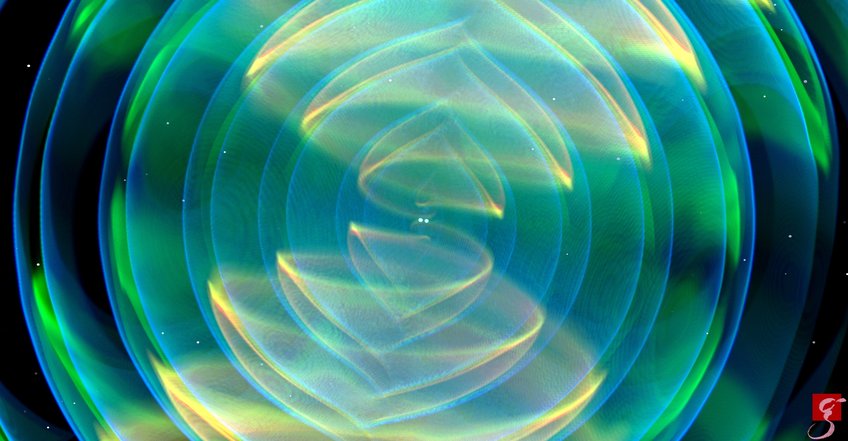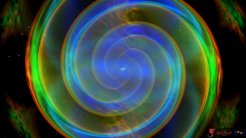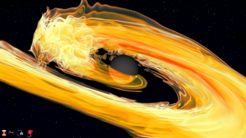
Multi-messenger Astrophysics of Compact Binaries
This Max Planck Fellow Research group investigates through numerical-relativity simulations the emitted gravitational-wave and electromagnetic signals from merging neutron star systems. The group was established in 2021 to strengthen the collaboration between the Max Planck Institute for Gravitational Physics and the University of Potsdam.
The observation of gravitational waves and electromagnetic signals from a binary neutron star merger in 2017 marks a breakthrough in the field of multi-messenger astronomy. To relate the observational data to the source properties, one requires accurate theoretical models of the last stages of the binary coalescence. Because of the complexity of the equations governing general relativity and relativistic fluids, this can only be done with advanced numerical-relativity simulations, which this group performs in collaboration with the department “Computational Relativistic Astrophysics”. These simulations deal with all nonlinearities of Einstein's equations and can be used to describe accurately the last stages of the binary coalescence. They predict the emitted gravitational-wave signal and are essential to understand the central engines of gamma-ray bursts and the origin of heavy elements in our Universe.

In fact, numerical-relativity simulations are the only tool able to cover the last few orbits before the collision of the two stars, i.e., the phase where gravitational forces are strongest. This makes numerical relativity an essential tool to characterize the imprint of the intrinsic binary parameters on the dynamics and to derive and validate gravitational-wave approximants in the strong-field regime, as well as to forecast the final remnant's properties and the amount of material ejected during the merger process.

Unfortunately, because of the high computational costs of numerical-relativity simulations, and since the binary neutron star coalescence is detectable for several thousand gravitational-wave cycles, it is impossible to directly relate the measured data to simulations. Hence, one needs to develop further gravitational-wave models that can be used to analyze the observations. Due to the finite size and internal structure of neutron stars, these gravitational waveform models have to incorporate the tidal deformation of the stars in their companions' external gravitational field. In close collaboration with the department “Astrophysical and Cosmological Relativity”, these models are actively developed by members of the Max Planck Fellow group.
In addition to the development of gravitational-wave models, the group is involved in the construction of models for electromagnetic signals, most notably the kilonova. Kilonovae are transients observable in the ultra-violet/optical/infrared bands originating from neutron-rich outflows and powered by the radioactive decay of r-process elements. These transients and in particular the combined analysis with the measured gravitational waves allows placing constraints on the supranuclear equation of state and the expansion rate of the Universe. Within a multi-messenger framework developed in our group, we combine gravitational-wave and electromagnetic information with results from nuclear physics computations and experiments.








